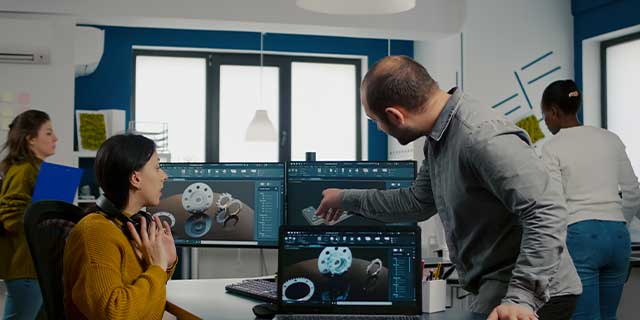
How to start manufacturing a product?
For every budding manufacturer, he needs to take care of how to start manufacturing a product? Manufacturing is as old as humankind itself. It began when humans began developing some essential tools for cutting rocks and killing animals. It has come a long way ever since. This article will highlight the different stages in product manufacturing and how to go through them.
It starts with an idea:
To develop any product, you first need to create an idea. The idea could be in the maker’s mind or the form of a blueprint or notes. Idea generation can sometimes take weeks or even months, and at times it just springs into the mind, and the maker gets going on it. Brainstorming exercise is also part of idea generation when more than one individual is involved.
Research is the key:
After you have hit upon the product idea, the next step is to start your research. Now, this is a lengthy process and covers different aspects. You can research the demand of your product, its competitors, if any, your target market, the USPs of your product, how it will add value to the customers’ lives, market size, product roadmap, size, price, and procurement its raw material, etc. The research should be all-encompassing and in-depth. The success of your product depends mainly on how you conduct your research on it.
Seek guidance from someone:
It is something many businesses overlook, especially those who are startups. There is no harm in seeking consultation from someone who knows about your product or has manufactured similar products before. Even if you have to pay that person, do it by all accounts. It helps to learn from someone’s experience and not commit his mistakes.
Enter the design phase:
The next step in our guide on how to start manufacturing a product is the designing phase. After you have done your research sought consultation, you start designing your product. While creating, you keep in mind the intended use of the product, its users, the type of raw materials, its functions, design of its packaging. It is a critical phase as the product’s prototype is based on configuration and the final production.
Fine-tune your design:
It could be a part of the above step, but you should treat it separately. Once you have finished designing and everything is okay with you, please review it. If you have partners, you can discuss the final blueprint with them or take professional help. You will see despite your diligence; there is room for some improvement. It is a cautionary exercise that you bring to avoid any possible setbacks in the future.
Develop a prototype:
After you have finalized the product’s design, the next step is to develop its prototype. A prototype is a workable replica of your product. It may not have to be precisely what you envisioned, but something close enough. It will help you physically assess the quality and functionality of your product. Sometimes, the product in question is too technical and complex to produce. In that case, you will have to seek a manufacturer who would make it for you.
The testing begins:
Now we are on that stage of how to start manufacturing a product where you test the prototype. The primary purpose of testing the prototype is to iron out all the flaws when you run the product. While the prototype may not be the replica of your product still, you can rely on its testing and reassess the design should any faults occur. It is much easier and more economical to rectify the wrongs at this stage. Because after the final production, things will be much more difficult. You can also choose a sample from your target market and get their views on the prototype’s performance.
Sourcing the proper manufacturer:
After you are done testing your prototype and have analyzed the results, too, it’s time for the final production of your product. You will need to find a manufacturer for that. There are hundreds of manufacturers out there, and choosing the right one can be a daunting challenge. It would help if you looked for a manufacturer with a clean reputation, is reliable, has experience in manufacturing similar to your product, has modern production lines, has no or flexible MOQ, is a legal entity, and offers a reasonable price. There can be other considerations, but these are the most relevant ones.
Get quotes from multiple manufacturers:
A typical mistake that many businesses make when looking for an excellent manufacturer to produce their product is that they rely on a small number of manufacturers. They are also that are easily accessible. They do not venture to reach far-off factories even though they can offer them better prices and other favorable terms. You should not repeat this mistake and get as many quotes as you can from a variety of manufacturers.
Should you outsource manufacturing?
This one is related to manufacturing. Outsourcing manufacturing jobs to off-shore companies are a fad these days. It is not without its due merits too. You can also go for this option. But, while deciding on this, price should not be the only or the decisive factor. It would help if you looked into other factors too. If you would like to visit the factory before or during the production process personally, then outsourcing is not your thing. Whatever you decide, take into account all the factors and then make up your mind.
Test the final product:
Now that you have the final product in hand, it’s time to test it again and collect feedback from intended users, friends, family members, etc. Ideally, it would be best to get some product samples from the manufacturer. Finalize this arrangement with your manufacturer that you would like to see and check some production samples before giving the nod to the final production. In this way, you can check the manufacturer’s product quality and your quality. If there are any issues, you can resolve them before having the entire consignment ready for dispatch.
Release the product:
Now that you have got the final production and everything is done, it’s time to release the product in the market and start selling it. For this, you will need to devise a clever marketing campaign, engage both traditional and digital marketing avenues, and produce results. To learn more about marketing your product, you can click here.
Collecting feedback on the final product is also essential. Your efforts notwithstanding, you will still receive some negative feedback. So, brace yourself for it and do not feel let down. You can keep those in mind and make sure they do not surface in the next production batch.
And that’s a wrap for how to start manufacturing a product:
We have listed all the steps in detail that cover all the aspects related to product development. We hope it was beneficial and instructive to you.


